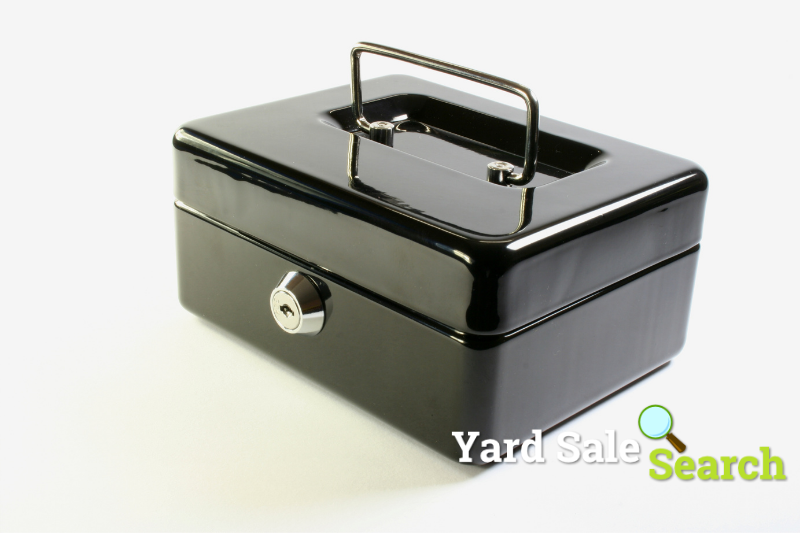Ah, the yard sale. A community event that brings together the whole neighborhood, helps some get rid of unnecessary clutter and helps others stumble onto new findings. From researching appropriate prices to picking the perfect date, there are plenty of important steps to take before hosting a successful yard sale. Just as important as the other steps is figuring out how much change to have ready before your sale starts—how much petty cash should be on hand at a yard sale?
The importance of petty cash
Yard sales are all about community, of course, but they’re also all about bargains. The same way that people aren’t looking to drop a lot of money at a yard sale, they also aren’t looking to have complicated or fussy transactions.
This means that, especially if you’re selling items that can be found in neighboring sales, you want to be able to make the purchasing experience as smooth and stress-free as possible. If, for example, you’re struggling to give exact change, or you constantly have to ask others to break down your bills, then your guests might decide to visit another sale with a smoother payment process. In short: having petty cash on-hand makes for a better experience all around.
Choose a nice, round number
Exactly how much petty cash you’ll need on hand might depend on your items and your region, but we find that around $100 is a pretty good sweet spot. If you choose to have more or less than this amount, however, we recommend you pick a nice, round number.
This really just comes down to simple math and making your life easier at the end of the day. Whether it be out of your own curiosity, or for more technical reasons like taxes, you might want to calculate your profit at the end of the day. In this case, your profit will be the cash you have at the end of the day minus the cash you started with. If you end up with, say, $953.73, it’s a lot easier to subtract $100 from that than it is $63.50. Sure, we have fancy calculator apps on our phones to take care of this for us, so it isn’t the end of the world either way, but starting with a round number just makes everything that much easier.
Smart pricing is your friend
Researching appropriate pricing is an important part of preparing for your yard sale, but just as important is making sure you are pricing in your own favor. When you start making your price tags and stickers, it can be tempting to price your $5 items at $4.99, since this is an effective trick to making the item seem significantly less expensive. However, this is only going to come around to hurt you.
Sure, you might get a few more sales this way, but unless you have a boatload of pennies to give out, making the right change is going to be a headache. Instead, try pricing things at friendly intervals, like $1 or $5 increments. Of course, the other side to this is…
Pick a partition
Here’s a fancy math term for you. A partition, formally, is a division of a whole into smaller pieces, in such a way that each item of the whole fits into exactly one of these smaller pieces. When it comes to numbers, a partition splits up the big number into smaller numbers that add up to the big one: 10 = 5 + 3 + 2.
After you’ve chosen your nice, round number, let’s say $100, you can’t just have a single $100 bill in your pocket ready to go—that’s virtually useless for change. You’ll have to pick a partition of this $100 that works for you and, particularly, that works with the pricing choices you’ve made.
Most people, for a yard sale, are probably going to be carrying $1 bills, $5 bills, $10 bills, as well as quarters and maybe dimes. If you’ve set your prices at 10 cent increments, you’ll want to make sure to have plenty of nickels. If you’ve chosen $5 increments, then plenty of $5 and $1 bills will be useful. Keep in mind that you will be receiving bills from guests throughout the day, and you can always put smaller bills together to make bigger amounts, but if you need to make smaller amounts out of bigger bills, you’re stuck.
One possible and useful partition of $100 is the following:
Four $10 bills; five $5 bills; twenty $1 bills; one roll of quarters; one roll of dimes.
This gives you plenty of smaller bills to start out with, and a few bigger bills just in case.
How to handle the petty change you have on hand isn’t always the first problem people think about when planning their perfect yard sale, but it’s certainly an important topic to tackle. We hope you’ve learned a thing or two as you prepare for your own petty change partition and, as always, long live the yard sale!
Yard Sale Search is the most popular platform to post your yard sales and garage sales online. If you want to get maximum visibility on the web, then you need to post your yard sale with us.





